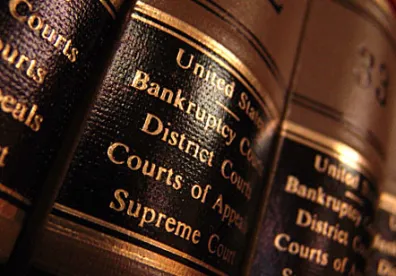Most business owners have experienced the frustration of a customer filing for bankruptcy, leaving a substantial unpaid balance. In some cases, you file your proof of claim with the bankruptcy court and await the resolution to determine what, if any, distribution (usually pennies on the dollar) you might receive. Unfortunately, things can go from bad to worse if you receive a letter from a bankruptcy trustee stating that the customer (Debtor) made preferential payments to you (Creditor) in the 90 days preceding the bankruptcy and is demanding that you return all of these funds. Here are the seven things you need to know about preference claims in order to determine how to respond.
1. What is a preference?
At the risk of oversimplifying, preferential payments include payments to a Creditor on antecedent debts (amounts owed prior to the payment), made while the Debtor was insolvent to a creditor within 90 days of the bankruptcy filing date1 which would allow the Creditor to receive more than they would have received had the claim been paid through the bankruptcy, and therefore more than received by similarly situated creditors.
2. What defenses are available?
While all such payments are presumed preferential, Creditors do have a number of defenses to these claims that may allow a Creditor to keep some or all of the alleged preferential payments. The most common defenses available are:
-
That the payment was a contemporaneous exchange;
-
That the payments were made in the ordinary course of business; and
-
That new value was provided to the Debtor after the preferential payments were made.
These defenses are affirmative defenses upon which the Creditor has the burden of proof. Each is discussed in more detail below.
3. What is a "contemporaneous exchange"?
A Creditor can establish the "contemporaneous exchange" defense by demonstrating that it provided new goods and/or services at or near the time the payment was made and that the payment was equal to the value of the goods and/or services. The most common examples would be a COD (cash on delivery) order, or a payment made prior to delivery.
4. What constitutes the "ordinary course of business"?
A payment made in the ordinary course of business is one that was made under terms and conditions and within a period of time consistent with the prior dealings between the Debtor and Creditor. If the consistent practice was that invoices were issued and payments were made within 30 days prior to the preference period and the parties continued to operate in this fashion during the preference period, such transactions would typically be considered as made in the ordinary course of business. It might even be possible to establish that payments which would otherwise be considered late payments were made in the ordinary course of business. If the payment or account history demonstrates that payments due within 30 days were consistently paid at 60 days, a Creditor could use this history to attempt to establish that such payments were made in the "ordinary course" of business between the parties.
5. What is "new value"?
If the Creditor supplied additional goods and/or services after one or more of the preferential payments, the Creditor can set off this new value against the amount of the preference claim on a dollar-for-dollar basis. For instance, if an allegedly preferential payment was made on June 1st and the Creditor supplied additional goods or services on June 15th, the value of these goods or services can be used to reduce the amount owed on the preference claim.
6. What do I do when I receive a notice of a preference claim?
Trustees often send out a demand letter providing notice of a preference claim prior to filing suit to recover. This allows the Trustee and the Creditor to attempt to reach a resolution without resorting to litigation. The Trustee may be facing deadlines for filing Complaints to pursue preference actions. As such there is often a time limit on responding to the Trustee's demand. Therefore, when you receive a demand from the Trustee, you will want to contact counsel as soon as practicable so counsel can advise you on what defenses may be applicable to your situation in order to respond to the Trustee. You will also want to pull your account history with the Debtor in order to determine what facts might support your defenses to the preference claim.
7. Will I have to give the money back?
The good news is that if any of these defenses are applicable, you or your counsel may be able to negotiate away some, or all, of the preference claim. The bad news is that if there was a preferential payment and no defenses are applicable, you will be required to return the payment(s). Even in such cases, a Trustee may be willing to negotiate a lower figure in order to avoid the uncertainty associated with litigation.
Preferences are a specialized area of law and the resolution of such claims often turns on the specific facts of a given cases. It is important to confer with counsel to assure that your rights are properly protected.
1 For the purposes of this article, we are focusing on non-insider Creditors. The look back period for insiders is one year, but there is no presumption the Debtor was insolvent at the time of the payment.




 />i
/>i

